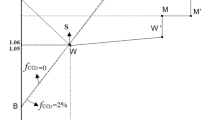Abstract
In steel manufacturing plants, blast furnace gas is generated from a furnace in which steel ore, coke and limestone are heated and melted. It is commonly used to produce electricity or released to the atmosphere in general; however, it can be utilized as a carbon source to produce C1 value-added chemicals. In this study, we propose two production schemes for methanol production and co-production of methanol and ammonia from blast furnace gas. Both cases were simulated using Aspen Plus V12 and economics was evaluated using Aspen Process Economic Analyzer (APEA). As a result, the methanol production case produced 99.4 wt% 232 t/day of methanol and the co-production case produced 97.7 wt%, 453.4 t/day of ammonia and 99.8 wt%, 263 t/day of methanol. The total annual cost of the methanol production case is US 121.6 M$/y and US 222.1 M$/y at the co-production case. The NPVs are −810.4 M$ in the methanol production case and −981.3 M$ in the co-production case, respectively. By sensitivity analysis, it is shown that the co-production case can be more economically feasible in the aspect of NPV when the raw material cost decreases 30%.
Similar content being viewed by others
Abbreviations
- IEA:
-
international energy agency
- COG:
-
coke oven gas
- BOFG:
-
basic oxygen furnace gas
- BFG:
-
blast furnace gas
- CCS:
-
carbon capture & storage
- CCU:
-
carbon capture & utilization
- LHV:
-
lower heating value
- DME:
-
dimethyl ether
- SMR:
-
steam methane reforming
- CAGR:
-
compound annual growth rate
- PFD:
-
process flow diagram
- PSA:
-
pressure swing adsorption
- TAC:
-
total annual cost
- TACC:
-
total annual capital cost
- TOC:
-
total operating cost
- NPV:
-
net present value
- HEN:
-
heat exchanger network
- AEA:
-
aspen energy analyzer
- APEA:
-
aspen process economic analyzer
- FCI:
-
fixed capital investment
- CRF:
-
capital recovery factor
- CAPEX:
-
capital expenditure
- OPEX:
-
operating expenditure
- wt:
-
weight
References
IEA, Global Energy & CO2 Status Report 2019, IEA, Paris (2019).
D. C. Rosenfeld and M. Lehner, Renew. Energy, 147, 1511 (2020).
W. Liu and F. Yang, Int. J. Hydrog. Energy, 46, 10548 (2021).
P. Cavaliere, Clean ironmaking and steelmaking processes, Springer, Lecce, Italy (2019).
K. Jiang, P. Ashworth and D. Angus, Renew. Sust. Energ. Rev., 119, 109601 (2020).
G. Leonzio, J. CO2 Util., 27, 326 (2018).
A. H. Tamboli and H. Kim, Chem. Eng. J., 323, 530 (2017).
J. Artz and W. Leitner, Chem. Rev., 118, 434 (2018).
R. M. Cuéllar-Franca and A. Azapagic, J. CO2 Util., 9, 82 (2015).
J. K. Lee, I. B. Lee and J. Han, J. Ind. Eng. Chem., 75, 77 (2019).
W. H. Chen and S. W. Du, Energy, 86, 758 (2015).
W. U. Soto and L. Falk, Renew. Sustain. Energy Rev., 74, 809 (2017).
W. Zheng and W. Zeng, Fuel, 302, 121100 (2021).
GlobeNewswire, https://www.globenewswire.com/news-release/2021/06/25/2253193/28124/en/Global-Methanol-Market-2021-to-2026-Industry-Trends-Share-Size-Growth-Opportunity-and-Forecasts.html (2021).
Methanol institute, https://www.methanol.org/methanol-price-supply-demand/ (2021).
B. Lee and H. Lim, Appl. Energy, 279, 115827 (2020).
M. P. Fortes and E. Tzimas, Appl. Energy, 161, 718 (2016).
S. Shin and I. B. Lee, Energy, 200, 117506 (2020).
N. Meunier and G. D. Weireld, Renew. Energy, 146, 1192 (2020).
J. M. Bermúdez and J. A. Menéndez, Fuel, 89, 2897 (2010).
D. Kim and J. Han, Energy, 198, 117355 (2020).
U.S. Geological Survey, Mineral Commodity Summaries 2019, Reston, VA, USA (2019).
Grand View Research, https://www.grandviewresearch.com/industry-analysis/ammonia-market (2017).
O. Osman and A. Sleptchenko, J. Clean. Prod., 271, 121627 (2020).
E. Koohestanian and A. Samimi, Energy, 144, 279 (2018).
N. D. Pawar and D. Stolten, Int. J. Hydrog. Energy, 46, 27247 (2021).
ApenTech® https://lms.nchu.edu.tw/sysdata/doc/1/196bb4d4fac4c3d7/pdf.pdf (2018).
H. A. Kalbani and H. Wang, Appl. Energy, 165, 809 (2016).
M. Matzen and Y. Demirel, Energy, 93, 1 (2015).
A. Alarifi and E. Croiset, Ind. Eng. Chem. Res., 55, 1164 (2016).
G. H. Graaf, E. J. Stamhuis and A. A. C. M. Beenackers, Chem. Eng. Sci., 43, 3185 (1988).
J. Nyári and A. S. Aarnio, J. CO2 Util., 39, 101106 (2020).
P. L. Spath and D. C. Dayton, NREL, Golden (CO, USA) (2003).
Encyclopedia Britannica, https://www.britannica.com/technology/Haber-Bosch-process (2020).
L. J. Christiansen, Ammonia: Catalysis and manufacture, Springer-Verlag, Lyngby, Denmark (1995).
Y. I. Lim, J. Choi, H. M. Moon and G. Kim, Korean Chem. Eng. Res., 54, 3 (2016).
D. M. Ruthven, S. Farooq and K. S. Knaebel, Pressure swing adsorption, Wiley, New York, USA (1994).
C. Zhang and S. C. Kang, Fuel, 157, 285 (2015).
M. S. Peters, K. Timmerhaus and R. West, Plant design and economics for chemical engineers, McGraw-Hill Professional, New York, USA (2002).
R. A. Turton, Analysis, synthesis, and design of chemical processes, Prentice Hall, Hoboken, New Jersey, USA (2003).
Chemical engineering, https://www.chemengonline.com (2021).
W. D. Seider and J. D. Seader, Product and process design principles, Wiley, New York, USA (2010).
The Engineering ToolBox, https://www.engineeringtoolbox.com/fuels-higher-caloriflc-values-d_169.html (2021).
METGroup, https://group.met.com/en/media/energy-insight/calorific-value-of-natural-gas (2021).
A. Ebrahimi and M. Ziabasharhagh, Energy, 126, 868 (2017).
F. P. Alege and P. M. Ndegwa, J. Clean. Prod., 310, 127481 (2021).
D. Bellotti and L. Magistri, Energy Procedia, 158, 4721 (2019).
G. Schnitkey, Weekly Farm Economics. 178 (2018).
J. M. Douglas, Conceptual design of chemical processes, McGraw-Hill New York, USA (1988).
Acknowledgements
This work was supported by the National Research Foundation of Korea (NRF) grant funded by the Korea government (MSIT) (No. NRF-2021R1F1A106339712). Also, this result was supported by Regional Innovation Strategy (RIS) through the National Research Foundation of Korea (NRF) funded by the Ministry of Education (2021RIS-003).
Author information
Authors and Affiliations
Corresponding author
Additional information
Supporting Information
Additional information as noted in the text. This information is available via the Internet at http://www.springer.com/chemistry/journal/11814.
Rights and permissions
About this article
Cite this article
Kim, S., Jeong, D.H. Techno-economic analysis of methanol and ammonia co-producing process using CO2 from blast furnace gas. Korean J. Chem. Eng. 39, 1999–2009 (2022). https://doi.org/10.1007/s11814-022-1129-9
Received:
Revised:
Accepted:
Published:
Issue Date:
DOI: https://doi.org/10.1007/s11814-022-1129-9




